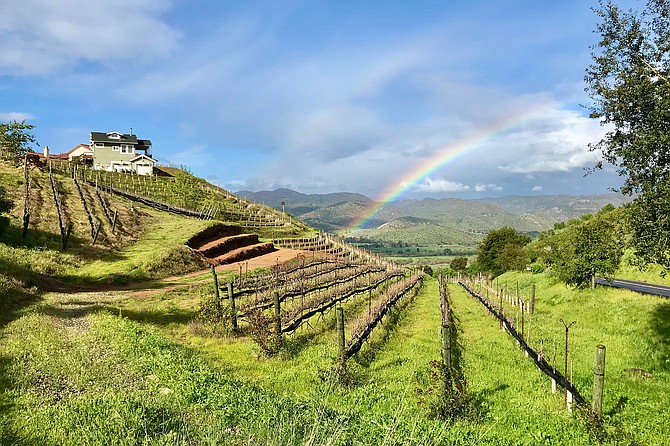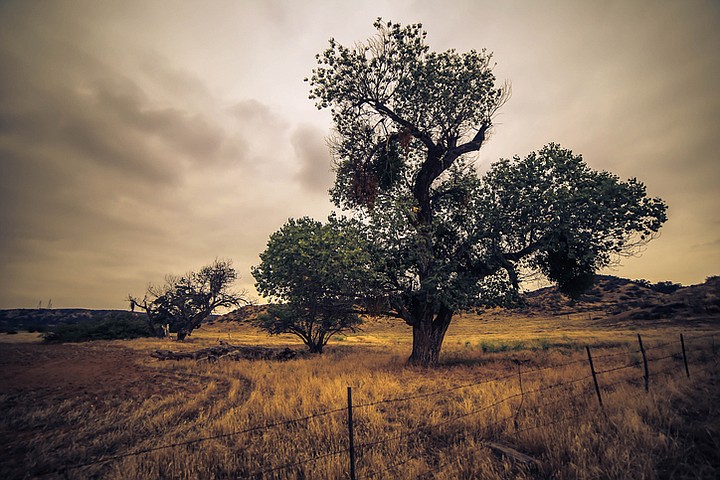 Facebook
Facebook
 X
X
 Instagram
Instagram
 TikTok
TikTok
 Youtube
Youtube

“Rainbow Season” arrives with the first rains of late fall. Scattered showers are best for rainbow watching: sunlight refracting and reflecting through the raindrops causes two bows to appear — an intense circular arc at 42˚ and a bigger but weaker arc at 51˚ from the antisolar point (the point in the sky diametrically opposed to the sun’s position). From November through mid-February, the sun never gets higher than 42˚ above the horizon as seen from San Diego, so (rain and sunlight permitting) the brighter of the two arcs may appear above the horizon at any time of day. In spring and summer, rainbows are never seen in the sky around midday because the sun is too high — and the antisolar point is too low.

The Fremont Cottonwoods along the San Diego River in Mission Gorge are now showing their best tawny foliage. You can park at the Old Mission Dam historic site or the Mission Trails Regional Park visitors’ center and explore the riparian area by way of riverside trails or by walking, bike riding, or skating along the bike path high above the river’s south and east banks. Large cottonwoods can also be seen along other watercourses throughout the San Diego County backcountry, including along the Sweetwater River near Cottonwood Golf Course, and in Cottonwood Valley, east of Pine Valley along Interstate 8.
Does the Sun already seem to be setting about as early as it ever will? You’re right! We’re still almost a month from the winter solstice — but the Sun sets its earliest each year around December 7th, if you’re near latitude 40° north. And already the Sun sets within only about 3 minutes of that time.
A Surprising Result of This: The Sun actually sets a trace earlier on Thanksgiving than on Christmas — even though Christmas is around solstice time!
But in Celestial Mechanics, every seeming abnormality is balanced out by an equal abnormality somewhere else. This earliest-sunset offset from the solstice date is balanced out by the opposite happening at sunrise: The Sun doesn’t come up its latest until January 4th. Blame the tilt of Earth’s axis and the eccentricity of Earth’s orbit.
The above comes from the Outdoors listings in the Reader compiled by Jerry Schad, author of Afoot & Afield in San Diego County. Schad died in 2011. Planet information from SkyandTelescope.org.


“Rainbow Season” arrives with the first rains of late fall. Scattered showers are best for rainbow watching: sunlight refracting and reflecting through the raindrops causes two bows to appear — an intense circular arc at 42˚ and a bigger but weaker arc at 51˚ from the antisolar point (the point in the sky diametrically opposed to the sun’s position). From November through mid-February, the sun never gets higher than 42˚ above the horizon as seen from San Diego, so (rain and sunlight permitting) the brighter of the two arcs may appear above the horizon at any time of day. In spring and summer, rainbows are never seen in the sky around midday because the sun is too high — and the antisolar point is too low.

The Fremont Cottonwoods along the San Diego River in Mission Gorge are now showing their best tawny foliage. You can park at the Old Mission Dam historic site or the Mission Trails Regional Park visitors’ center and explore the riparian area by way of riverside trails or by walking, bike riding, or skating along the bike path high above the river’s south and east banks. Large cottonwoods can also be seen along other watercourses throughout the San Diego County backcountry, including along the Sweetwater River near Cottonwood Golf Course, and in Cottonwood Valley, east of Pine Valley along Interstate 8.
Does the Sun already seem to be setting about as early as it ever will? You’re right! We’re still almost a month from the winter solstice — but the Sun sets its earliest each year around December 7th, if you’re near latitude 40° north. And already the Sun sets within only about 3 minutes of that time.
A Surprising Result of This: The Sun actually sets a trace earlier on Thanksgiving than on Christmas — even though Christmas is around solstice time!
But in Celestial Mechanics, every seeming abnormality is balanced out by an equal abnormality somewhere else. This earliest-sunset offset from the solstice date is balanced out by the opposite happening at sunrise: The Sun doesn’t come up its latest until January 4th. Blame the tilt of Earth’s axis and the eccentricity of Earth’s orbit.
The above comes from the Outdoors listings in the Reader compiled by Jerry Schad, author of Afoot & Afield in San Diego County. Schad died in 2011. Planet information from SkyandTelescope.org.
Comments